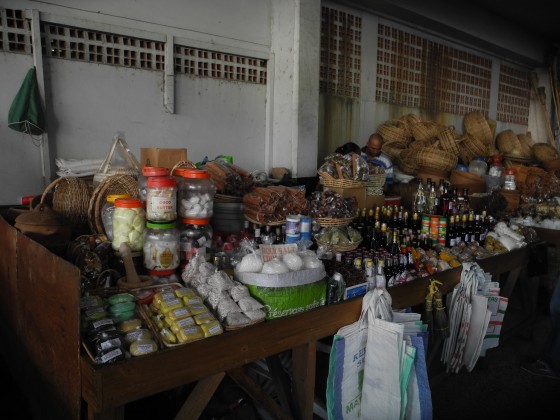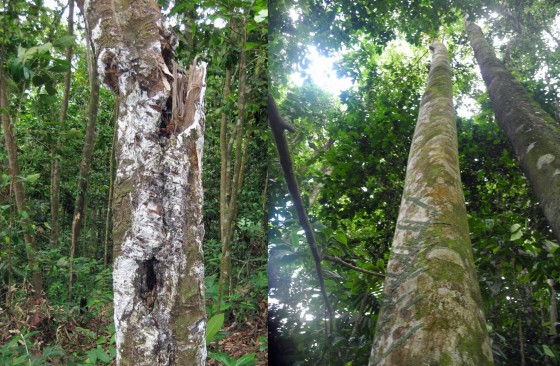Why this species?
The lansan tree (Protium attenuatum) is endemic to the Eastern Caribbean, but has disappeared across much of its range in the Windward Islands. Only Saint Lucia and Dominica are confirmed to hold substantial populations. The species is currently listed as Data Deficient but GTC-backed research indicates the lansan should be assessed as Endangered.
Resin collected from the tree is used as incense and is purchased by over 60% of Saint Lucians. Its links to religious ceremonies means that it has an important cultural role in the country and is also exported to other islands in the Lesser Antilles, who have depleted their own stocks. In Saint Lucia lansan trees are still abundant but faced increasing pressure from uncontrolled extraction of their aromatic resin.

Market place in Saint Lucia selling lansan resin. Ccredit: Jenny Daltry/FFI.
Traditional tapping methods are extremely detrimental to health of the trees, causing infection, rotting and termite infestation. Heavily tapped trees increase the vulnerability of the entire population to other threats, in this case, the spread of pests and diseases between trees.

A lansan tree killed by over-tapping (on the left) compared to an untapped tree (on the right). Credit: Jenny Daltry/FFI.
What did we do about it?
GTC supported innovative research by the Saint Lucian Forest Department with technical support from Fauna & Flora International (FFI) and international volunteers from the Durrell Conservation Trust, to determine what offtake rates the trees can withstand without adverse effects. The project supported the Saint Lucia Forest Department to develop a sustainable management plan for lansan trees. Surveys were also conducted across the species’ range in the East Caribbean to update its conservation status.
Key achievements and future directions
More than 380 trees were monitored and led to a major breakthrough for the species; identifying a harvesting method that reduces impact on the sensitive trees, while increasing resin yield. The research also revealed a ‘rest period’ allowed exploited trees to grow extraordinarily quickly, which demonstrates the value of continued monitoring and evaluation. Furthermore, surveys to assess the global population of the species have been completed across the Windward Isles and a final assessment has been drafted to submit to the IUCN Red List. The available data indicates that the species should be classified as Endangered.

Adams Touissaint demonstrating tapping of a lansan tree. Credit: Jenny Daltry/FFI.
The GTC initiative generated significant attention on the lansan tree, which is now a priority species for the Forestry Department: the team supported the development of a sustainable management plan for lansan trees. This sets out a nationwide system to regulate trade of lansan resin through a certification scheme which provides licences to tappers who operate sustainably.
An important lesson from this work is to account for economic theory and conduct market studies as early as possible when designing trade interventions to help predict how affecting supply and demand for the species may affect price and thus the income received by the resin tappers. Ideally, this should be in parallel with the ecological study, to design the most effective certification scheme. A critical question for to be addressed is the potential for international trade of lansan resin and if there is a limit of promoting trade in this Endangered species.
The initiative has been widely supported by lansan tappers and officials alike, and has promoted a sense of stewardship amongst the tappers, who now collaborate with the Forestry Department on preventing unlawful tapping by unlicensed tappers. This is a major achievement that will help to ensure long-term implementation of the management recommendations throughout Saint Lucia.
